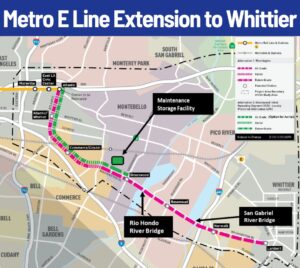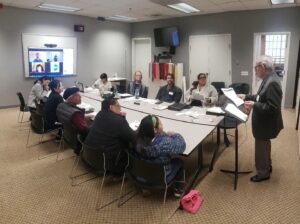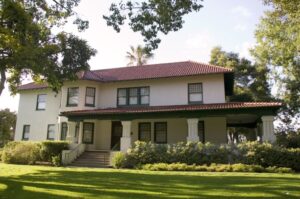
Lawrence Christon
Newly appointed mayor Mario Trujillo recently raised the topic of inviting Trader Joe’s to open a store in Downey, as he did earlier in the year with Councilmember Hector Sosa. Both seemed somewhat miffed that one wasn’t already here and acted as though some kind of divine order of things stood out of balance until that situation was redressed.
The question is, why?
For decades I’ve been hearing those who consider themselves among Downey’s prominent citizenry lament the absence of a local Trader Joe’s–as though the establishment of one would present a miraculous cure for all that ails us. Let’s forget for a moment that many in Downey likely have little knowledge of Trader Joe’s, let alone a strong desire to shop there. So why do our city leaders take such a proprietary, even indignant tone because one isn’t here? (Perhaps it’s partly because, in its earlier days, Downey once had a Pronto Market, the chain that would eventually morph into Trader Joe’s).
To recap: in 1967, a man named Joseph Coulombe opened the first Trader Joe’s in that WASP-iest of cities, Pasadena. Motivated by the proliferation of 7-Elevens in the Southland, Columbe transitioned away from the convenience store model of Pronto because of growing competition.
From the beginning, Coulumbe wanted to establish an agreeably priced, internationally flavorful, somewhat adventurous, even romantic motif, as though he was a worldly seafarer bringing home exotic foods and spices for locals to enjoy. This included European, especially Italian, culinary items: focaccia and other Italian breads, cheeses, inexpensive wines, packaged solo meals, and an endless variety of imports that were often only available on a limited basis.
The place developed an exotic, informal atmosphere, with friendly, helpful employees called “crew members” and “captains” dressed in Hawaiian shirts, and an inventory of foodstuffs that were both novel and safe. You never knew what you’d find on a given visit, only that it seemed unique and offered in the spirit of off-beat fun.
Over time, the chain caught on, mainly because it didn’t seem like a chain, like Whole Foods, Albertson’s, or Ralph’s. It appealed to a certain middle- and upper-middle-class figure: Volvo (and later, Prius) driving academics, PBS contributors, creative types, and the upwardly mobile. By 2022, the chain boasted more than 535 outlets stateside in places as dissimilar as Nashville, Boston, and New York City–with 192 in California. There are over a dozen in the City of Los Angeles.
Such is its popularity that its Monrovia headquarters finds itself continually fielding requests from all over the country for licenses to open new stores (surprisingly, it has no capacity for dealing with questions from the press). Since Trader Joe’s has a following that borders on the cultish, they’re picky about who, or whom, they allow into the club.
Odds are that Downey would not make the cut, despite its misconceived reputation as the “Mexican Beverly Hills.”
So why is it that, chances are, Trader Joe’s will not come to Downey? For the same reason that Downey doesn’t have a bookstore. For the same reason its largest municipal building, the Downey Civic Theater, never presents actual theater and doesn’t begin to compare with the real Beverly Hills’ luxe, state-of-the-art Annenberg Center. Or that its single art gallery can’t survive in its impractically cramped shoebox location without regular infusions of city dollars.
With the disappearance of places like the Silver Saddle and the Regency Room from Downey, there are precious few, if any, fine dining supper clubs–you know, the kind that provide tablecloths and silverware and don’t need pictures on their menus because their patrons can read. Forget entertainment, or even a piano bar. The Palms on Florence has closed, ditto the salsa club on Firestone west of Paramount. All those garishly lit takeout joints that line Firestone near Downey Avenue suggest nothing so much as a fast food strip mall, and the central urban space in what is laughingly called Downtown Downey, though somewhat enlivened by Don Lamkin’s satirical mural and OLA Restobar’s neon night light, is gobbled up in the big butt dead zone of Porto’s parking structure, which is closed to the public after 9 p.m.
In short, the people who live in Downey enjoy little by way of shared cultural experiences outside of TV sports screens.
Downey doesn’t fit the demographic profile Trader Joe’s generally serves: the college-educated white or Asian woman between 25 and 44 years old, who makes at least $80,000 a year, according to analytics firm Numerator. The kind of woman, say, who was part of the fund-raising luncheon clubs that once supported the symphony.
Downey’s per capita income is $35,000 (Beverly Hills’ per capita income is $104,000 by comparison). Only one out of four people you’ll meet in Downey over 25 has a bachelor’s degree or better. Nearly three-quarters of Downey’s population is Latino—not that that’s indicative of anything; post-war New York became the cultural capital of the Western world on the strength of millions of immigrants fleeing war-torn Europe, not to mention the arrival of hundreds of thousands of Puerto Ricans beginning in 1948. Downey’s average household size is 3.22 people and the median household income is $84,000 a year.
Demographically speaking, Downey is a mixed-class city, part middle-, part working-, family-centered, only a few generations, if that, removed from the wrenching flight from poverty, crime, oligarchy, and military dictatorships that have characterized so much of Latin America for too long. And in the meantime, Downey is far from immune to the ills plaguing much of the region: the growing threat to our social safety, homelessness, the lack of affordable housing, social isolation, and a gulf between voters and city hall. And, as former Mayor Claudia Frometa would add, the sinister havoc wreaked by the easy availability of Fentanyl.
Any oddsmaker would tell you that Trader Joe’s would probably want no part of the actual Downey that lurks in the census figures and everyday life, despite the delusional self-congratulation its city leaders continually lavish on it. In fact, that’s one of the city council’s persistent failings: a slippery relationship with the actual world’s possibilities. If the reward of landing a Trader Joe’s store is yet another excuse for our city leaders to gloat over the acquisition of a status symbol, Downey might be better served by asking, “Who needs it?” Particularly when, so far, that seems to be the question Trader Joe’s has been asking of us.
Lawrence Christon is a former award-winning staff writer for The Los Angeles Times. He was born and raised in New York City, and served honorably in the United States Marine Corps. He has lived in Downey for decades.





